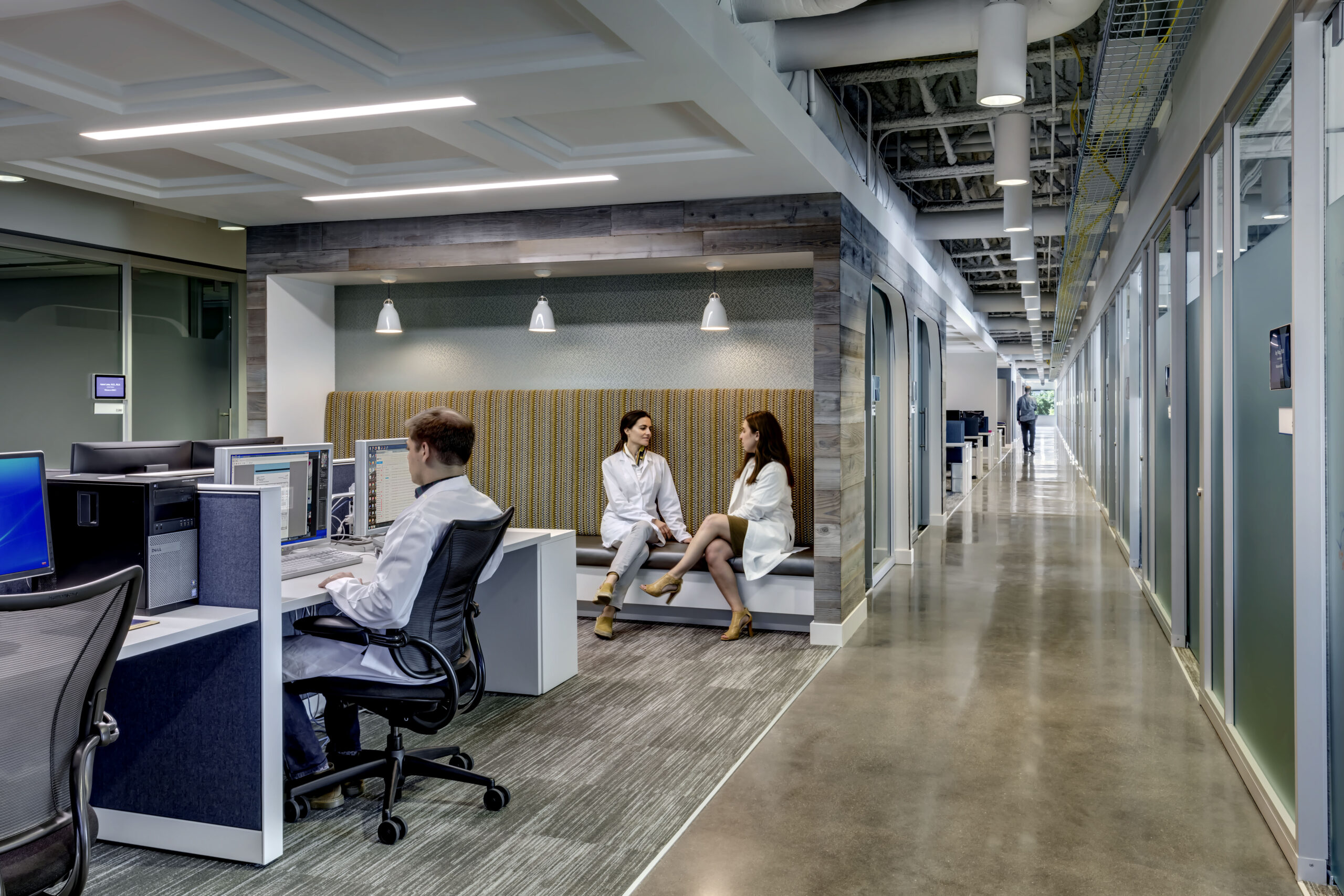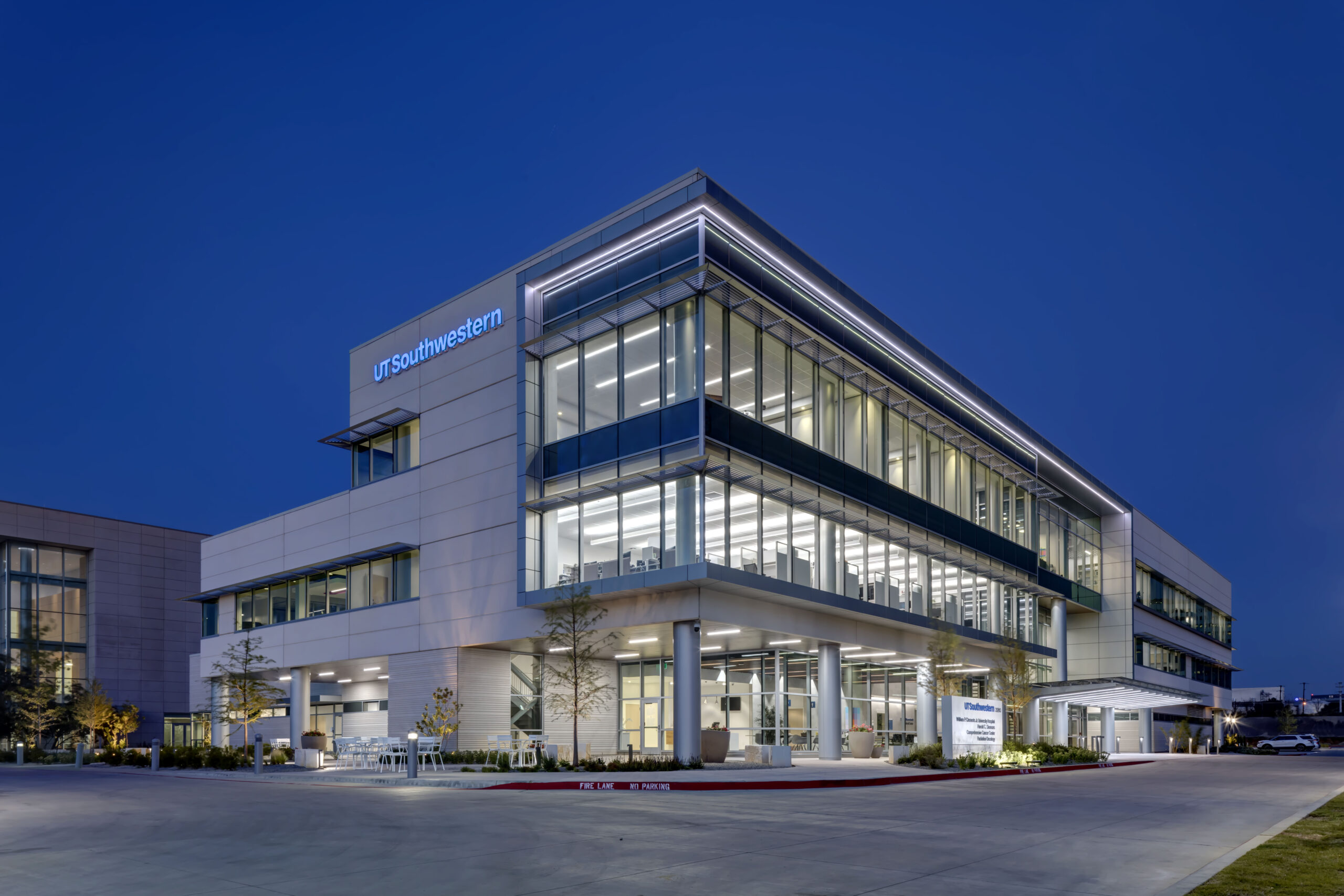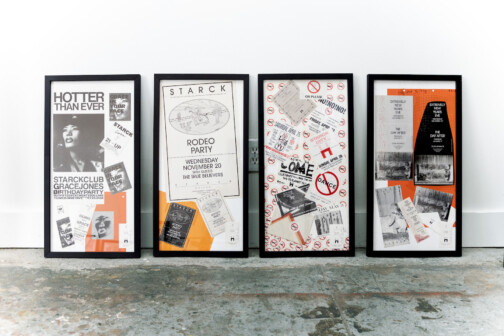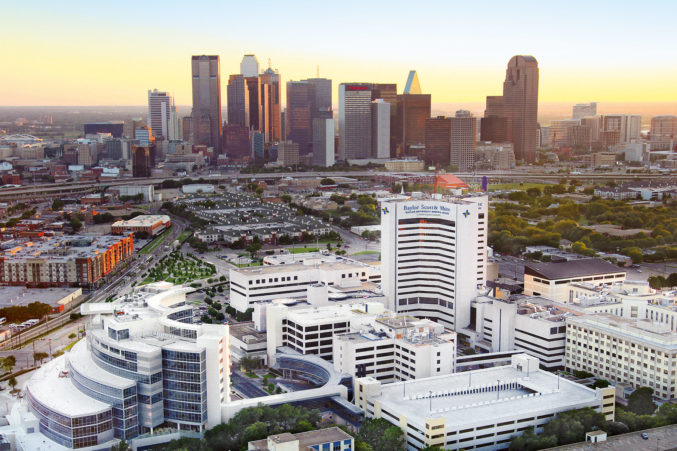As our knowledge of cancer care treatments has grown, so too has the physical design of cancer care facilities. These design elements must address the clinical requirements of diagnosis, treatment, and care and consider ways in which patient wellbeing can be optimized through the design and layout of the space to maximize positive outcomes.
The progress of cancer care has come a long way since the first descriptions of cancer in 2000 BC. The first cancer care facilities were in France, far away from the major cities and towns, as cancer was believed to be contagious. As the facilities moved back into the cities, basement bunkers were developed in fear of the radiation used to treat certain cancers. Sapna Bhat, a senior project manager of architecture firm Perkins and Will’s Dallas studio, says now that our knowledge of cancer care treatments has grown, the patient experience can be at the forefront.
“There is synergy between the specific research on where we are and how the physical spaces interact,” Bhat says. “Any physical space has to cater to the human, the needs of users of that space. Cancer centers are, to me, they are an empathetic architecture.”
At the beginning of the 20th century, shortly after radiation began to be used for diagnosis and therapy, it was discovered that radiation could cause cancer as well as cure it. From then on, the technologies and methods used to treat cancer have rapidly progressed. “Now we use photons which progressed to protons and now heavy ions to use that technology towards cancer treatment because the heavier the ions are more disruptive than the cancer cells,” Bhat says. Advancements in cancer care such as intensity-modulated radiation therapy, image guiding, and 3D printing have allowed Bhat and her team to design spaces that create a more comforting patient experience and increase the efficiency of the healthcare system itself.
“As architects and designers, we have to be very flexible and nimble in the way we approach things, and we have to be purposeful in doing what we do,” Bhat says.”The entire team needs to work together—the designers, the care team, providers and contractors all have to collaborate. Just as advancements in the medical field, there are also newer construction trends and materials that the firm should be leaning on. From a space planning perspective, we should continue to create spaces that encourage health and well-being. Future demands are met by careful planning and encouraging healthier behavior by providing amenities like teaching kitchens, community gardens, and wellness centers.”

The advancement of bunker wall design is fascinating, according to Bhat. New self-shielding technology removes the need for three to four-feet thick concrete walls in bunkers. “That’s a phenomenal advancement,” Bhat says. “There are some limitations to that, but like any other research or anything that we do, it has pros and cons.”
Healthcare, especially now during the COVID-19 pandemic, is exceptionally stressful for staff, patients, and families. The patients are the priority, but so is the staff that takes care of them. In that sense, cancer care facilities should design areas to serve as spaces for respite, recovery, and wellbeing, according to Bhat. Not only is this beneficial for the staff, but it could be for the patients as well.
“We have to create spaces where there are some serendipitous interactions between the staff members provide collaboration spaces,” Bhat says. “There needs to be an interaction between these different teams, so that they bounce ideas off of each other, or even just hearing somebody say something about their patient might trigger an area of interest for an answer or a solution to the other doctors.”
The design of a cancer care facility is important cause it’s meant to support both patients and staff, and their families. “It’s a home,” Bhat says. “Cancer patients, they already are so anxious, they have a lot of stress on them. What we can do as designers is a question that we constantly keep asking and how we can make a difference in their lives and help with this.”






